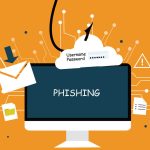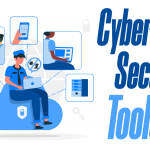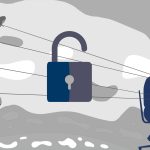Introduction
In the digital era, ransomware attack has evolved into one of the most dangerous cyber threats affecting individuals, businesses, and even governments. By 2025, cybercriminals are expected to deploy more sophisticated and AI-driven ransomware attacks that can bypass traditional security measures. This makes it essential for every internet user to understand how ransomware works and how to stay safe from it.
Table of Contents
What Is Ransomware Attack?
Ransomware is a type of malicious software that locks or encrypts your files and demands payment (usually in cryptocurrency) to restore access. Once infected, your data becomes inaccessible, and the attacker holds it hostage until the ransom is paid. Common types of ransomware include CryptoLocker, WannaCry, Ryuk, and Maze each using advanced encryption to pressure victims into paying quickly.
How Ransomware Works
A ransomware attack typically begins when a user clicks on a malicious link, downloads an infected attachment, or visits a compromised website. Once the ransomware infiltrates the system, it encrypts all accessible data including connected drives and network files. Attackers then display a ransom note demanding payment, often with threats to leak sensitive data if the ransom is not paid.
To understand the technical behavior of ransomware attack and its variants, you can explore detailed documentation at Malwarebytes Labs or Kaspersky Threat Intelligence Portal.
The Rising Threat in 2025
Cyber experts predict that ransomware attacks in 2025 will be fueled by artificial intelligence and automation. Attackers are now using AI-powered algorithms to target specific industries, identify weak systems, and automate the encryption process. Additionally, “Ransomware-as-a-Service” (RaaS) platforms have made it easier for even unskilled hackers to launch attacks by renting pre-built ransomware kits.
Organizations that rely heavily on cloud storage and remote work environments are particularly vulnerable. A single phishing email or outdated server configuration can compromise entire networks. According to a recent report from IBM Security, the average cost of a ransomware breach reached over $4.5 million in 2024, excluding the ransom amount.
How to Stay Safe from Ransomware
1. Keep Your Software Updated
Regularly updating your operating system, browsers, and applications ensures that known vulnerabilities are patched. Enable automatic updates wherever possible.
2. Use Reliable Security Tools
Install a trusted antivirus and anti-malware solution such as Bitdefender, Norton, or ESET. These tools can detect and quarantine suspicious files before they execute.
3. Backup Your Data Regularly
The most effective defense against ransomware is maintaining frequent and secure backups. Store backups both offline (external hard drives) and online (cloud storage) but ensure the backup device is disconnected when not in use to prevent infection.
4. Beware of Phishing Emails
Most ransomware attacks begin through phishing. Always verify the sender’s email, avoid clicking on suspicious links, and double-check attachments. Platforms like PhishTank can help identify known phishing sources.
5. Use Strong Access Controls
Implement multi-factor authentication (MFA) for all logins. Limit user privileges so that employees only access the data necessary for their roles. This reduces the spread of ransomware within a network.
6. Educate Yourself and Your Team
Human error remains the weakest link in cybersecurity. Regular awareness training for employees and personal vigilance can prevent the majority of ransomware infections.
What to Do If You’re Infected
If you become a ransomware victim, disconnect from the network immediately to stop the spread. Report the incident to cybersecurity authorities or organizations like No More Ransom, which offers free decryption tools for certain ransomware families. Avoid paying the ransom, as there is no guarantee your data will be restored, and it encourages further criminal activity.
Conclusion
As ransomware continues to evolve in 2025, protecting yourself requires more than just antivirus software it demands proactive defense, awareness, and consistent security hygiene. By updating your systems, backing up data, and recognizing threats early, you can significantly reduce the risk of falling victim to these attacks.
Cybersecurity is no longer optional; it’s a digital survival skill. Stay informed, stay updated, and safeguard your data before it’s too late.
Also Check How Generative AI Is Transforming the Creative Industry 2025











1 thought on “How to Stay Safe from Ransomware Attacks in 2025”